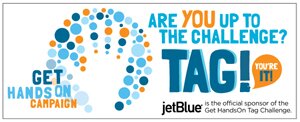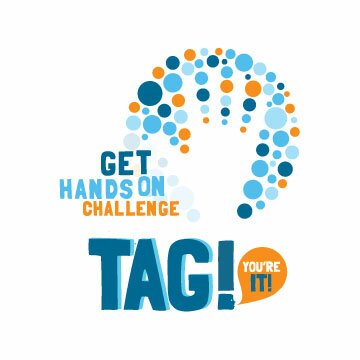 Happy May Day! It is a day to celebrate the beautiful flowers blooming in our communities and the last weeks of spring before the heat of summer rolls around. Take this opportunity to beautify your community by planting a flower garden in your neighborhood, home, or community center!
Happy May Day! It is a day to celebrate the beautiful flowers blooming in our communities and the last weeks of spring before the heat of summer rolls around. Take this opportunity to beautify your community by planting a flower garden in your neighborhood, home, or community center!
Flowers can beautify any dreary space. Have a park that could use some beauty? Clean it up and plant some flowers! Need to restore an old school? Add a school garden! Want to teach your kids about the environment? Teach them about the ecosystem through a garden. A garden can be the source of so many things from knowledge to food it is a wonderful way to get out and beautify your community, while celebrating an international holiday, as well!
Are you clueless when it comes to planting a flower garden? Check out our step-by-step guide that will get your project started with ease!
- Identify partners and leaders: Call on friends, family, schoolteachers, etc. to be volunteer leaders or to donate materials for the project. You will need rocks, hand towels, and flowers such as yellow, white, or light pink flowers. These flowers will bring butterflies to your garden.
- Set a location: Contact your local community organizations or centers about space they could donate to the project. Arrange a site visit with your team leaders to review the project plan before the volunteers arrive. Make sure you choose a location that receives a high amount of sunlight and a low amount of wind for plants at this time of year!
-
Establish goals: Goals will help you plan the actual project and the outcome you wish to achieve. Make a goal and plan
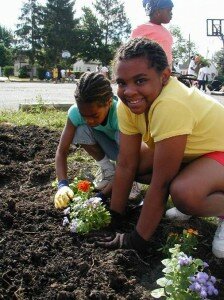 the project around that.
the project around that.
-
Develop your plan: Ask yourself the following questions when developing your garden project:
- Where can I get funding for the plants and the supplies?
- What resources are available for use?
- Where can I find enthusiastic green thumb volunteers?
- How do I get the message out about the project?
- Do I want to attach a learning aspect to the project?
- Do I need help from volunteer leaders? What kind of leaders do I need?
- How will we maintain the garden after the project is finished?
- Define a timeline: Set a timeline for the project: how long it will take to plant the flowers, obtain the supplies, and maintain the garden.
- Promote: Recruit volunteers through fliers, newspaper articles, or social media. You can do this yourself or recruit the help of volunteers depending on the size of your project.
- Empower youth leaders: Allow young people to suggest ideas and contribute to the overall project planning. Their voice and ideas are vital to ensuring a successful project.
- Reflect and recognize: After the project, reflect on the work that was accomplished. Thank your volunteers for their contribution to the project.
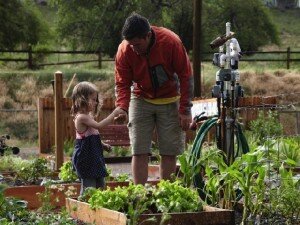 Your garden will be a great way to celebrate the month of May while improving your community’s overall well being. Gardens contribute to a better ecosystem, overall.
Your garden will be a great way to celebrate the month of May while improving your community’s overall well being. Gardens contribute to a better ecosystem, overall.
Have fun getting your hands dirty with your neighbors and happy May Day!
Have you started a flower garden in your community? We would love to hear your comments and suggestions in the comment section below!

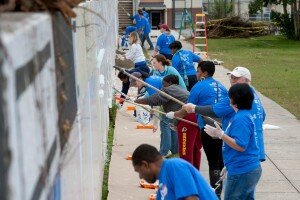
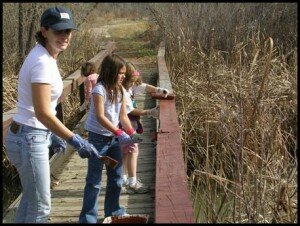 at your local park will allow you to appreciate and preserve your local park.
at your local park will allow you to appreciate and preserve your local park.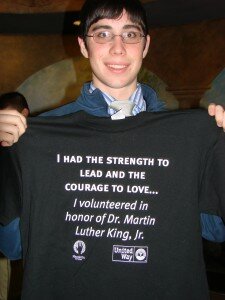
 Today’s post comes from Claire Dooms, a Get HandsOn AmeriCorps member at
Today’s post comes from Claire Dooms, a Get HandsOn AmeriCorps member at 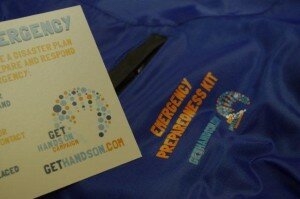 When natural disasters strike, it’s amazing how a community, a country, even the world, can come together in light of a tragedy.
When natural disasters strike, it’s amazing how a community, a country, even the world, can come together in light of a tragedy.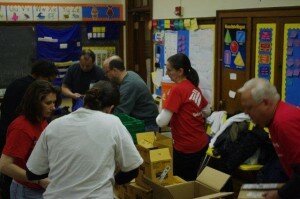 On Tuesday, April 19 a group of volunteers got together to do just that.
On Tuesday, April 19 a group of volunteers got together to do just that.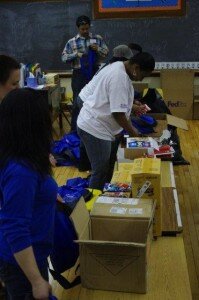 It was very rewarding to see everyone working together and working out a plan to get things done. Once we finished, I was more than happy to answer their questions about exactly what the purpose of the bags was and how they could get more involved in service work in their own communities.
It was very rewarding to see everyone working together and working out a plan to get things done. Once we finished, I was more than happy to answer their questions about exactly what the purpose of the bags was and how they could get more involved in service work in their own communities.
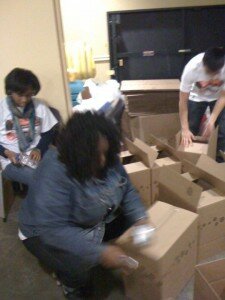 Follow the Leader focuses on people fulfilling their commitments from Tag and doing the work. So far, I like what I’m seeing! Every day, I get emails updating me about the previous day’s activities on the site, and it is very encouraging to see new members not only registering on the site, but making unique commitments and telling the community about the causes they care about. Each of them are addressing needs specific to their location and are applying the Project Playbooks to meet those needs.
Follow the Leader focuses on people fulfilling their commitments from Tag and doing the work. So far, I like what I’m seeing! Every day, I get emails updating me about the previous day’s activities on the site, and it is very encouraging to see new members not only registering on the site, but making unique commitments and telling the community about the causes they care about. Each of them are addressing needs specific to their location and are applying the Project Playbooks to meet those needs.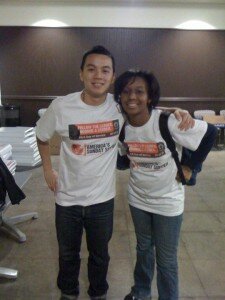 Here’s my invitation for you to be a part of our community! Check out Get HandsOn and sign up to take part in Follow the Leader. Download a Playbook, recruit members of your community, and be ready to make a difference. You never know who is looking up to your acts of service and will model your behavior. Caring about the community around us benefits everyone involved and the rewards from it will stretch far beyond your immediate surroundings.
Here’s my invitation for you to be a part of our community! Check out Get HandsOn and sign up to take part in Follow the Leader. Download a Playbook, recruit members of your community, and be ready to make a difference. You never know who is looking up to your acts of service and will model your behavior. Caring about the community around us benefits everyone involved and the rewards from it will stretch far beyond your immediate surroundings. For the second stage of the Get HandsOn Challenge, we launched
For the second stage of the Get HandsOn Challenge, we launched 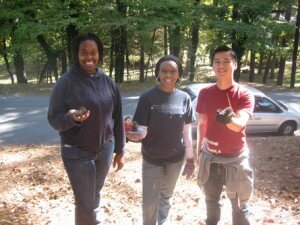 Ken serves as an AmeriCorps National Direct member through the
Ken serves as an AmeriCorps National Direct member through the 
 by Khyati Desai, Civic Engagement Manager,
by Khyati Desai, Civic Engagement Manager,  Today’s post comes from David Ray, Chief Strategy and Public Policy Officer for Points of Light Institute.
Today’s post comes from David Ray, Chief Strategy and Public Policy Officer for Points of Light Institute.